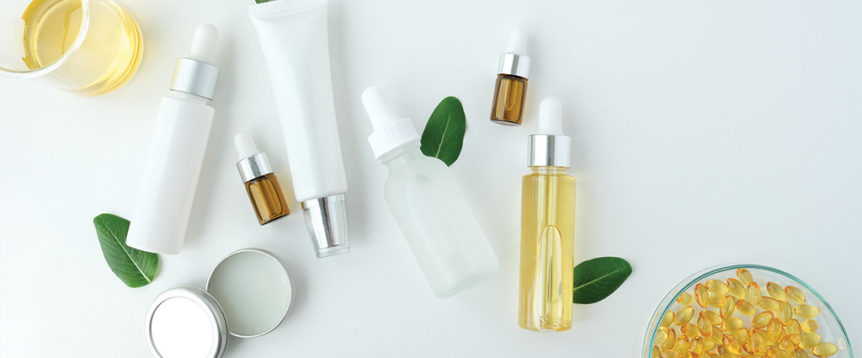If you aim to live a healthy lifestyle, you’ve likely made it a habit to check labels on the foods and drinks you consume. But what about the products you use <i>on</i> your body? Those matter too, says Dr. Steve Xu, an assistant professor of dermatology at Northwestern University’s Feinberg School of Medicine. “Skin health is a big part of overall wellness,” he asserts.
The catch is that the Food and Drug Administration (FDA) doesn’t regulate the self-care products industry the same way it does food and beverages, says Erika Wilhelm, a spokesperson for the nonprofit Campaign for Safer Cosmetics. “It is perfectly legal for companies to use chemicals linked to cancer, birth defects, hormone disruption, infertility and respiratory harm in the beauty and personal-care products we use every day,” she says. “That’s because the federal law that governs this $84 billion domestic cosmetics industry is only 2.5 pages long and has not been updated in 81 years.”
Chemicals of concern appear across self-care product categories, but the worst offenders include fine fragrances, hair relaxers, hair dyes, nail products and feminine-hygiene products, Wilhelm says. Many individual ingredients are potentially toxic, but a major red flag to watch out for is the vague term fragrance (or parfum). “Fragrance is a cocktail of ingredients and may include dozens or more potentially harmful chemicals,” Wilhelm explains. “It can be found in nearly half of all personal-care products.” Dr. Xu asserts that fragrance is the number-one culprit in allergic reactions to skin products.
Toxic products enter our bodies in a variety of ways, including absorption through the skin and lungs, and ingestion (especially lipstick or lip balm), Wilhelm says. “The rate of absorption varies greatly by individual, and more research is being done about how these chemicals enter our bodies,” she adds.
The tough part for consumers is that manufacturers aren’t required to list ingredients on labels, so it’s hard to know what products contain. To seek out safer products, Wilhelm recommends that consumers:
1. Read ingredient labels. “It is perfectly legal for companies to use ingredients linked to cancer, endocrine disruption, and reproductive harm in the cosmetics and personal care products we use every day,” she says. You can find a partial list of potentially harmful ingredients at bcpp.org/resource/red-list.
2. Don’t let natural and organic claims fool you. “These words have little meaning in the largely unregulated personal-care products industry,” she says. “Natural doesn’t always mean safe (for example, lead), and not all synthetic ingredients are harmful.”
3. Use online tools to find safer products. Apps and websites like Think Dirty, EWG’s Skin Deep and the GoodGuide rate personal-care products for safety and toxicity, Wilhelm says.
4. Choose products with the MADE SAFE seal. MADE SAFE makes easier to find less-toxic products by labeling them with a third-party-tested seal, she explains.
The good news is that selecting cleaner products really can make a difference. A study published in Environmental Health Perspectives tested 100 Latina teenagers before and after using less-toxic personal-care products for three days. At the end of the trial, urine levels of several concerning chemicals had dropped anywhere from 27 to 45 percent—a strong indication of the power of clean self-care.

